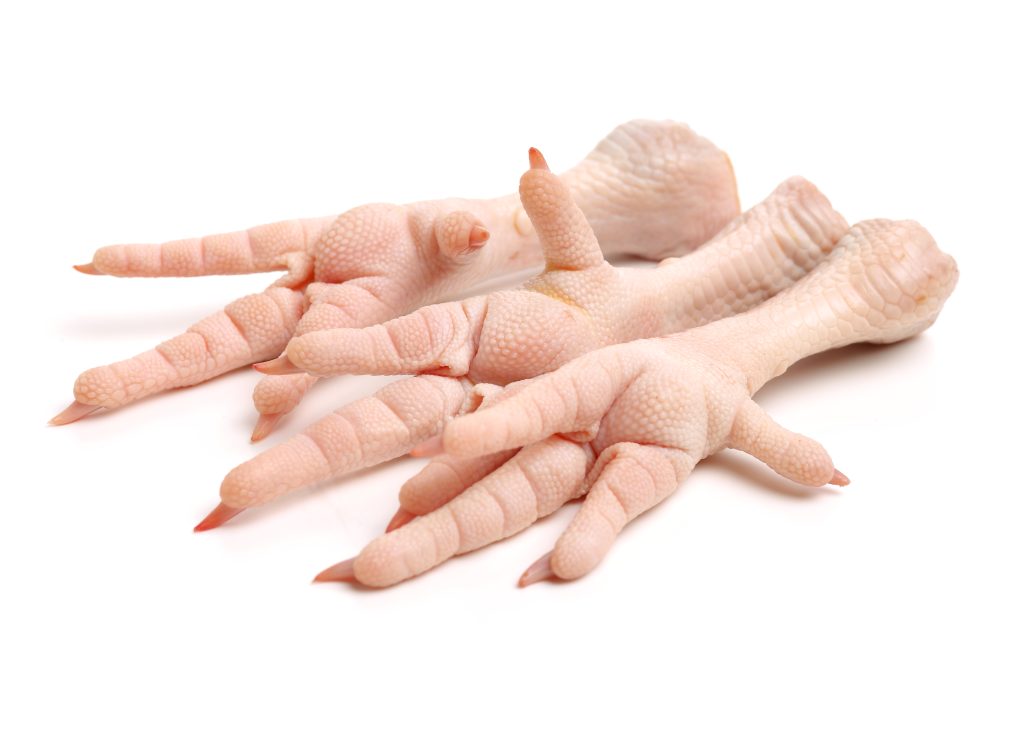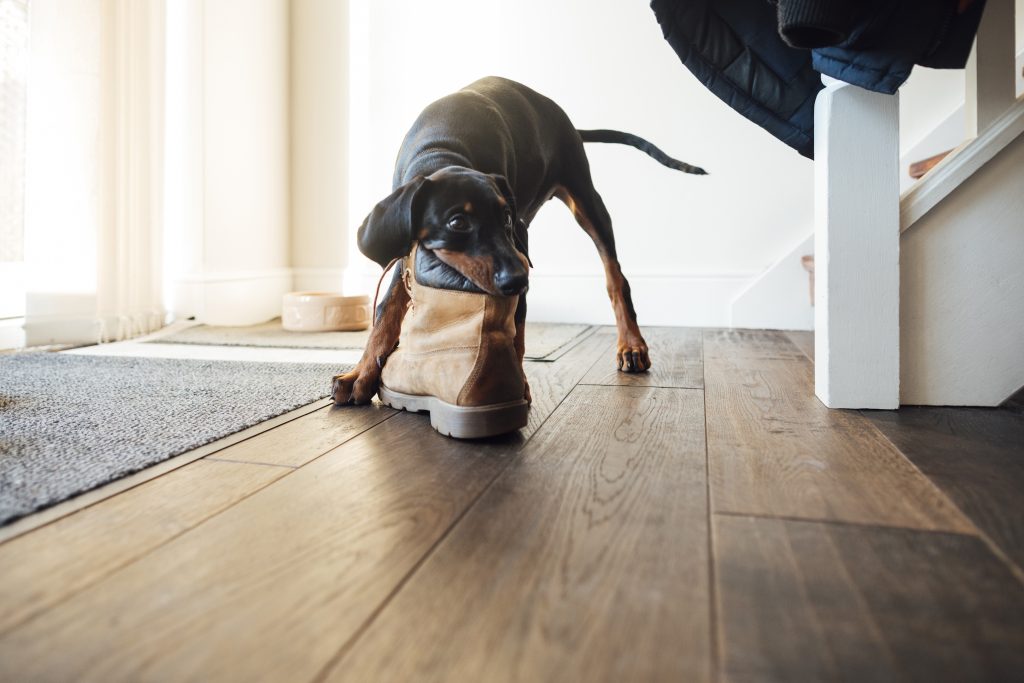Is it safe for my dog to eat bones?

Is it safe for my dog to eat bones?
“Give your dog a bone” may be the most universally recognizable saying when it comes to man’s best friend, but is it really that simple? The reality is that, yes, bones can absolutely be a great source of key nutrients for dogs, not to mention chomping away on one helps to clean their teeth and exercise their minds. However, not all bones are created equal, and some can actually harm your dog. So, while yes, you can give your dog a bone – and they will certainly thank you for it – you need to make sure you’re giving them the right bone.
The kinds of bones dogs should never eat.
Cooked bones.
While the leftover bone from your steak dinner may seem like the perfect treat to give your dog, serving cooked bones is actually incredibly dangerous. Most people know that cooked chicken bones are a no-no, but the reality is that any cooked bone is a hazard for your pet, even those big beef bones left over from your ribeye. This is because when bones are cooked or dehydrated, all the moisture is sucked out of them and they become brittle, making them significantly more likely to splinter into smaller shards that can do a lot of damage when your pet bites into them or worse, when swallowed.
But fear not, you can still make use of those cooked bones before tossing them! The best way to utilize a leftover bone is to boil it in a homemade bone broth that you can pour over your pet’s meals – though of course make sure you’re straining the bone out before you serve. Your dog will love the taste and you’ll love the health benefits it provides.
Weight-bearing bones.
Weight-bearing bones, like marrow bones, from larger grazing animals are significantly harder and more dense than other bones in an animal’s body because these are the bones that are responsible for bearing the majority of the animal’s weight. Because of this, these bones present a risk of damaging or fracturing your dog’s teeth when they try to bite into them and break them down. Even many of the other bones from large animals can be risky as well due to their density. However, the leg bones from small animals such as chicken or rabbit are not considered “weight-bearing” since those animals do not weigh much to begin with.
Machine-cut bones.
Machine-cut bones like pork chops or steak bones can have sharp edges that can be harmful to your pet, or they can be cut into chunks that are small enough to be a choking hazard. The bones that you’ll find at your local butcher will often be machine cut, so take extra care if you’re choosing to source your raw bones from your butcher and do not purchase any bones that have been machine-cut. Shop our raw bones and you can be certain you’re not feeding any machine-cut bones.
Bare bones.
It is recommended to always feed appropriate meaty bones with the meat still on the bone because it helps to act as additional cushioning. That said, you can still make use of meat-free bones in your kitchen. For example, if you debone some chicken legs for your dinner, a great option is to use the leftover bare bones to make a broth rather than incorporating the bones themselves directly into your dog’s raw meals.
The kinds of bones dogs can safely eat.
Raw meaty bones – aka edible bone.

Raw meaty bones, typically from smaller animals, are what you should reach for when you want to “throw your dog a bone”, in the most literal sense. These are raw bones that are softer and easier for your dog to chew and are still cushioned with muscle meat. Depending on the size and age of your dog, and where you are in your feeding routine, these types of bones can include anything from beef neck bones and poultry frames to smaller raw bones like chicken feet or necks.
Ground bone – aka a whole bone alternative.
If you don’t want your pet gnawing on a raw bone, or if they have any health conditions or symptoms that may prevent them from doing so, you can always incorporate pre-ground bone into their meals. This way, you can be sure that your dog still receives the nutritional benefits that bone provides. Both our Variety Blend and Truly Raw Base meals are excellent options to incorporate pre-ground bone into your raw meals. With the Truly Raw Base, you’re getting single-protein blends of muscle meat, organs, and edible bone, while the Variety Blend goes a step further and also incorporates whole fruits and vegetables alongside the protein mix – both are great options that serve as the foundation for a perfectly crafted raw meal. For DIY raw feeders, we have ground turkey necks as a ground option for meaty bones.
The benefits from feeding raw bones.
Clean teeth and healthy gums.
Gnawing away at a raw bone helps to scrape plaque and tartar buildup off your dog’s teeth and chewing on the sinewy muscle tissue can act as a floss. Some pets may still need the assistance of regular brushing and dental care from a professional, but many pet parents report clean teeth on a raw diet that includes raw meaty bones.
Strong jaws.
Chewing on raw bones activates not only the muscles in your dog’s jaw, but in their neck and shoulders as well. If ever you can’t exercise your dog, whether they be recovering from an injury and can’t go for walks or maybe weather is keeping you house-bound, give them an indoor workout by feeding raw meaty bones.
Mental stimulation and endorphin release.
Dogs are carnivores with a natural desire to chew; it provides great mental stimulation for them and reduces endorphins – the happy hormone. Give them something healthy to gnaw on and they’ll be less likely to chew on something they’re not supposed to out of boredom.

Essential nutrients for healthy bodies.
Raw meaty bones are great natural sources of essential vitamins and minerals like calcium and phosphorus. And the smaller raw bones, like chicken frames and feet, are packed with collagen in their connective tissues.
How to choose the best raw bone for your dog.
Similar to the fact that not all bones are created equal, not every type of raw bone should be fed to every dog. Smaller dogs should be fed smaller bones, and vice versa. Generally speaking, you should size up on bones you are feeding so that your dog has to crunch down on the bone rather than swallowing it whole. For example, a medium-size dog may want to start with a duck neck or turkey neck as opposed to a chicken neck because they are slightly larger in size.

How often should I be feeding raw bone?
Edible bone of any kind should never be fed as a full meal replacement, but rather incorporated into a raw diet that’s balanced over time. A good general rule of thumb to follow is that edible bone should make up 10% of a balanced diet in adult dogs, and 17% of a balanced diet in puppies. This percentage refers to the actual bone amount and does not include the meat on the bone. Recreational bones should be fed in moderation – at minimum it is generally recommended to rotate neck bones with other meaty bones (like frames, feet, necks, wings, etc.) every other day in a raw diet. Make sure to monitor your dog’s consumption of bones and keep an extra cautious eye on dogs that are more powerful chewers.
Can puppies eat bones too?
The short answer: yes! Raw meaty bones are a great option to feed puppies. They receive all the nutritional benefits from the dense muscle meat and calcium-rich bone, while giving them something healthier to chew on than your favorite pair of sneakers or the leg of your coffee table while they’re teething. However, some puppies may need ground bone during teething if their mouths are sore enough that they refuse whole bones. Selecting the right raw bone for your puppy is similar to selecting the right raw bone for an adult dog, make sure it’s an appropriate size for the size of your pet – not too big, not too small.
And of course, like dogs of all ages, puppies will need to be supervised when fed bones – never leave your pet alone while eating a bone or a chew of any kind.
How to safely store your raw bones.
Storing and handling your raw food can be easy and safe as long as you follow a few simple food safety tips. For starters, all raw meat should be stored and thawed in its own dedicated containers and kept separate from food meant for human consumption. Raw bones should be stored frozen until you’re ready to feed them. You can feed partially frozen bones to give your dog more of a jaw workout while they chew, or you can wait until they’ve completely thawed in the refrigerator to feed. If your dog doesn’t finish their bone in one sitting, be sure to store it in its sealed container back in the fridge, and do not keep refrigerated for longer than 48 hours.
Still have questions about feeding raw bones? We’re here to help!
Disclaimer: This blog is intended for educational purposes only. You are responsible for your pets’ health and safety. We encourage you to research topics further and consult with your Veterinarian or Pet Nutritionist before modifying your pets’ diet. If you’d like more one-on-one guidance, we offer consultation calls with our in-house raw feeding experts.